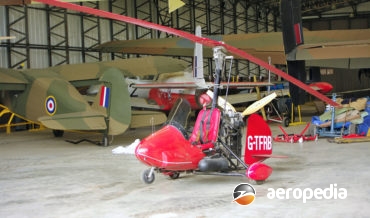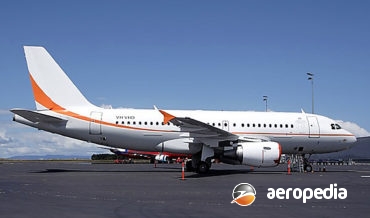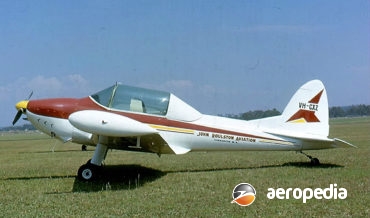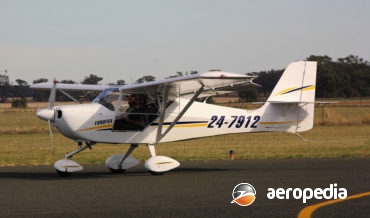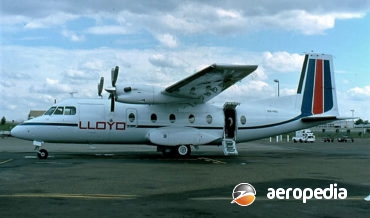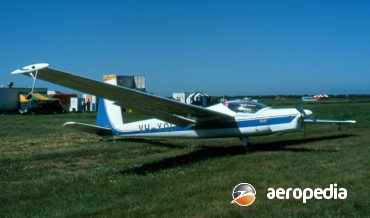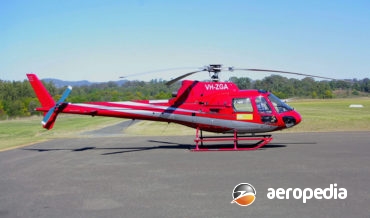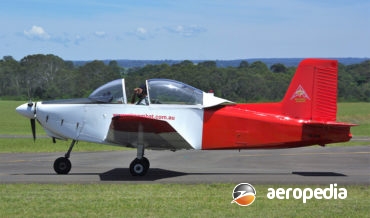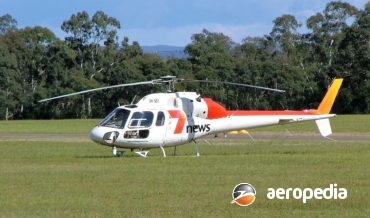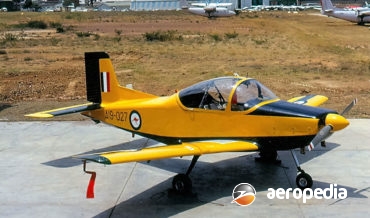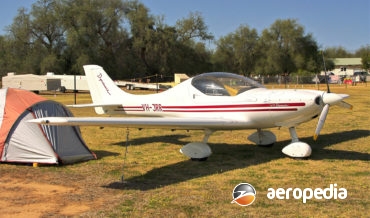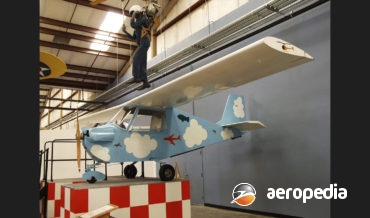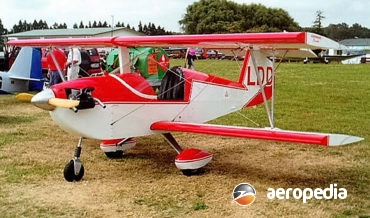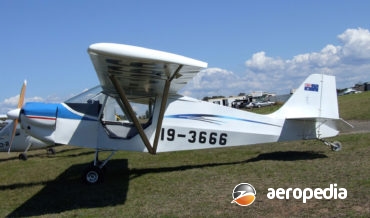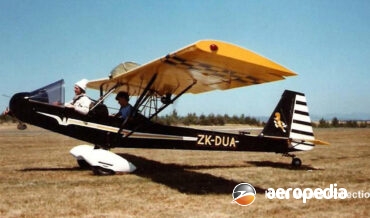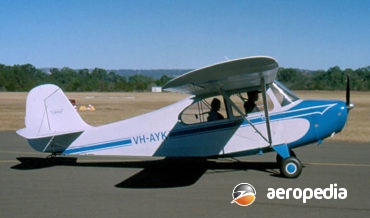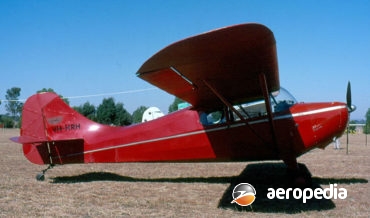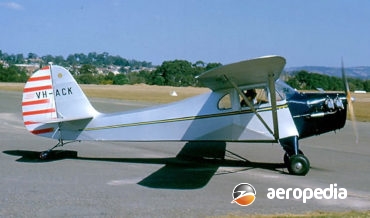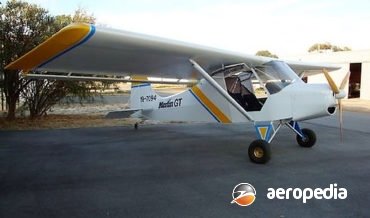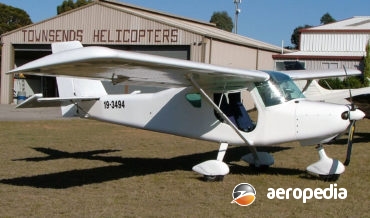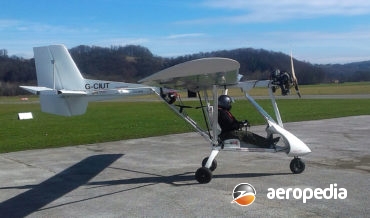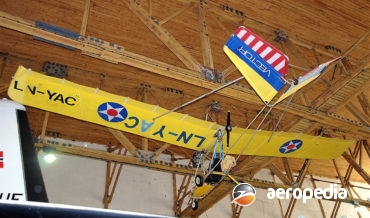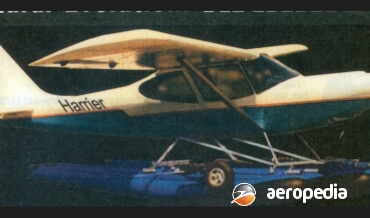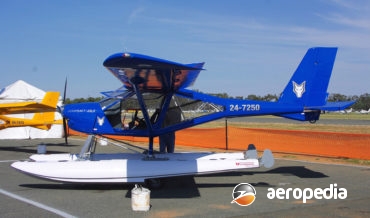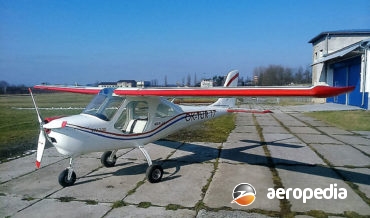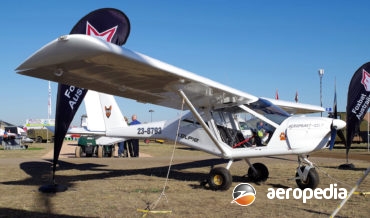All Contents
Contents
The Commander Elite is a two-seat gyrocopter produced by Air Command International of Caddo Mills, Texas and is one of a range of machines produced by this Company.
David C. Eyre
- May 8, 2019
In mid 1993 Airbus Industrie launched what it described as the A319, a 130-seat derivative of the A320, planning to commence deliveries to customers in 1996. Power plant was to be either the CFMI CFM56-5B5 or the Aero Engine V2500-A5 turbofan.
David C. Eyre
- May 8, 2019
Aerostructures was a company known for some years for modifying aircraft to increase performance for operators, aircraft conversions including the Cessna 172, 175 and 210, and customizing other types.
David C. Eyre
- May 8, 2019
The Eurofox is manufactured by Aeropro in Nitra, Slovakia, and is a factory-built, ready-to-fly aircraft, being developed by that company for the Very Light Aircraft (VLA) market. Development of the design commenced in 1990, the concept being based on the Avid Flyer but many refinements were made to the design,
David C. Eyre
- May 8, 2019
The Taipan was an ultralight single-seat high performance machine designed and built in the 1980s by Aerotec of Toowoomba, QLD, powered by a 37-kw (50-hp) Fuji 440 engine (440-cc) which was a conversion of a Snowmobile engine for aviation use.
David C. Eyre
- May 8, 2019
The Nord 262 light transport, originally known as the Max Holste Super Broussard, was designed by Avions Max Holste but in 1960, this company was taken over by Nord Aviation.
David C. Eyre
- May 8, 2019
The Vivat, a motor glider, made its first flight at Uherske Hradiste in Czechoslovakia in May 1987, production beginning five years later, and more than 200 entered service with gliding clubs throughout Europe.
David C. Eyre
- May 8, 2019
The prototype of the Ecureuil (Squirrel) light utility helicopter, powered by a Lycoming LTS 101 turboshaft, was flown for the first time on 27 June 1974. On 14 February 1975, the second prototype was flown, powered by the French Arriel turboshaft. The type subsequently entered production France at an initial
David C. Eyre
- May 8, 2019
Following the refusal of the Australian Federal Government to give preference to Australian-built aircraft and provide a tariff against imported aircraft, the Aviation division of Victa Ltd ran into financial difficulties and production stopped after 168 aircraft had been completed, although a further four aircraft were on the production line.
David C. Eyre
- May 8, 2019
The AS 355 was a development of the AS 350 series with twin engines aimed at the police, ambulance, EMS and media role seating six persons, and more than 650 examples have been produced.
David C. Eyre
- May 8, 2019
The Airtrainer was evolved by Aero Engine Services Ltd (as it then was) of Hamilton, NZ, from the four-seat Victa Aircruiser (VH-MVR), which was designed by the late Henry Millicer for Victa Ltd.
David C. Eyre
- May 8, 2019
The Dynamic is an advanced light-weight light aircraft seating two side-by-side. Conceived in 1996, series production commenced in 2000 and by 2005 more than 100 had been delivered to 19 countries.
David C. Eyre
- May 8, 2019
The A-109 series of helicopters aircraft was designed by Costruzioni Aeronautiche Giovanni Agusta SpA in Italy as a high-speed, high-performance, twin-engine helicopter, the basic commercial model accommodating a pilot and seven passengers.
David C. Eyre
- May 8, 2019
The Quail was designed by H L Woods of North Carolina in 1970, construction of the prototype commencing in the following year and it first flew in December 1971.
David C. Eyre
- May 8, 2019
The A-119 Koala made its public debut at the Paris Air show in June 1995, the prototype (I-KOAL) having flown earlier that year. The second prototype flew later that year and deliveries commenced in February 1996 to Omniflight Helicopters.
David C. Eyre
- May 8, 2019
The Scamp was designed by Mr H L Woods for construction by amateurs, being intended to be simple to build and able to operate from grass strips.
David C. Eyre
- May 8, 2019
The AB-139 was announced at the Farnborough Airshow on 8 September 1998 as a joint venture by the recently formed Bell/Agusta Aerospace Company, being a six-tonne midsize helicopter aimed at a range of civil applications and, once civil certification was obtained, to perform a variety of military missions, including search
David C. Eyre
- May 8, 2019
The Supapup is a two-seat ultra-light monoplane produced by Sport Aircraft Pty Ltd near Hahndorf in the Adelaide hills.
David C. Eyre
- May 8, 2019
The AW-169 is a development of the AW-139 and shares a common cockpit with the Company’s AW-139 and AW-189. It was designed for medical and search and rescue duties, law enforcement and passenger transport; and offshore and utility services and on the market competes with the EC-145, Bell 429 and
David C. Eyre
- May 8, 2019
Seating two persons in tandem in open cockpits, the Woody Pusher has a parasol wing and is a light aircraft aimed at the homebuilt market for sporting use.
David C. Eyre
- May 8, 2019
The AW-189 is a development of the earlier AW-139 and AW-169 and is a twin-engine helicopter designed by Agusta Westland. This is a Finmeccanica company and the helicopters are built in Italy by Leonardo, which was formerly known as Agusta Westland and merged with Leonardo Finmeccanica in 2016.
David C. Eyre
- May 8, 2019
The R40S is a low-wing all-metal construction kit aircraft produced in Romania for the light aircraft market. The prototype (YR-6138) was shown at the Paris Airshow in June 2001, this aircraft making its first flight on 3 May 2001.
David C. Eyre
- May 8, 2019
he Model 7 Champion series was introduced to the Aeronca range in 1946 immediately after World War II, as a light training and touring monoplane.
David C. Eyre
- May 8, 2019
he Aeronca Chief was introduced to the Aeronca Aircraft Corporation of Middleton, Ohio, range of aircraft in 1946 and was a development of the Model 7 Champion, varying mainly in having a wider fuselage to accommodate two persons side-by-side in lieu of in tandem.
David C. Eyre
- May 8, 2019
Designed and developed by Aero-Sport International Ltd of Auckland, the prototype of the Kahu two-seat light sporting gyrocopter (ZK-RCP – c/n K1) has been under development since 2001, flying for the first time on 27 July 2001 and received a temporary flight permit certificate allowing for full testing on 24
David C. Eyre
- May 8, 2019
Developed from the Model K series, the Model 50-C, known as the Chief, was powered by a Continental A-50 four-cylinder horizontally-opposed air-cooled engine. It differed from the earlier model in having a wider fuselage, an increase in wing area and all up weight, and other details changes.
David C. Eyre
- May 8, 2019
Agrocopetros LTDA was founded in Colombia in 1971 by Maximo Tedesco to design, manufacture and market ready to fly light aircraft in South America.
David C. Eyre
- May 8, 2019
The Aeronca series was produced by the Aeronautical Corporation of America at Lunken Airport in Cincinnati, Ohio. The prototype C-2 was flown for the first time in 1928 powered by the company’s own engine, the 19.3-kw (26-hp) Aeronca E-107A two-cylinder air-cooled unit. Produced in considerable quantity, this model had a
David C. Eyre
- May 8, 2019
The Comp Air 4, also known as the’Comp Monster” is one of a series of kit build aircraft produced by Aerocomp Inc of Merritt Island, Florida, which was formed in 1993 initially to build floats for seaplanes.
David C. Eyre
- May 8, 2019
The Aeronca K Scout series of light aircraft was a side-by-side two-seat light cabin monoplane introduced to the Aeronca range of aircraft in 1937. Powered by a 30-kw (40-hp) Aeronca E-113-CBD engine, it was subsequently produced in a number of models with a variety of power plants to meet customer
David C. Eyre
- May 8, 2019
The Merlin, which was originally designed in Canada in 1990 by John Burch, was developed by Aerocomp Inc of Merritt Island, Florida and in recent years has been available from Blue Yonder Aviation.
David C. Eyre
- May 8, 2019
The Legend 540 and Legend 600 are produced in the Czech Republic by Aeropilot and it is a 80% scale Cessna 182E produced at Caslav for the World light sport aircraft market.
David C. Eyre
- May 8, 2019
The Pegasus is a composite light aircraft designed by Ivan Celso de Castilho in Brazil. The prototype first flew in 1992 and, after four years of testing, a production facility known as Aerodesign Desenvolvimentos Aeronauticos Ltd was set up to build the type, which became known as the Pegasus Silver
David C. Eyre
- May 8, 2019
The Solo is one of a series of aircraft developed in Bulgaria by Aeroplanes Dar, the Company having been established in 1917 by the King of Bulgaria, King Ferdinand, as a workshop for what was to become the Country’s National Air Force.
David C. Eyre
- May 8, 2019
The Vector series of ultralight aircraft was designed in the United States by Messrs Berndt Petterson, Michael McCarron and Paul Yarnell and was designed to US FAR 103 Ultralight Vehicle regulations and was developed in a series of models by Aerodyne Systems and introduced to the market in kit form
David C. Eyre
- May 8, 2019
The A-20 Vista is a light sporting high-wing monoplane built in the company’s facility in Kiev in the Ukraine in kit form and is a two-seats in tandem light aircraft with a strut-braced wing, the engine being in the pusher configuration behind the cockpit, and it has a conventional undercarriage.
David C. Eyre
- May 8, 2019
The Harrier was a three-seat light touring and sporting aircraft marketed by Aeromarine Marketing Ltd of Kuranda in northern Queensland. Produced in kit form in about 2001, the aircraft was of all-composite construction and replaced its predecessor in the manufacturer’s production facility, this having been an aircraft of wooden construction
David C. Eyre
- May 8, 2019
The A22 Foxbat is a quick-build aircraft kit produced in Russia aimed at the ultra-light market but which may also be registered in the normal category. By the end of 2001 more than fifty kits had been built and sold around the world, and the type has been certified in
David C. Eyre
- May 8, 2019
The Merlin series of light aircraft was designed in the Czech Republic and is produced by Aeromarine LSA at South Lakeland Airport in Florida, US and was introduced to the aviation fraternity at the Sport Aviation Expo in Florida in early 2016.
David C. Eyre
- May 8, 2019
The Kelpie is a development of the Foxbat and Vixen series produced in The Ukraine to meet the requirements of outback properties in Australia and around the world.
David C. Eyre
- May 8, 2019
Recent Comments
Archives
Categories
- No categories
Categories
- No categories
Latest Posts
Newsletter

